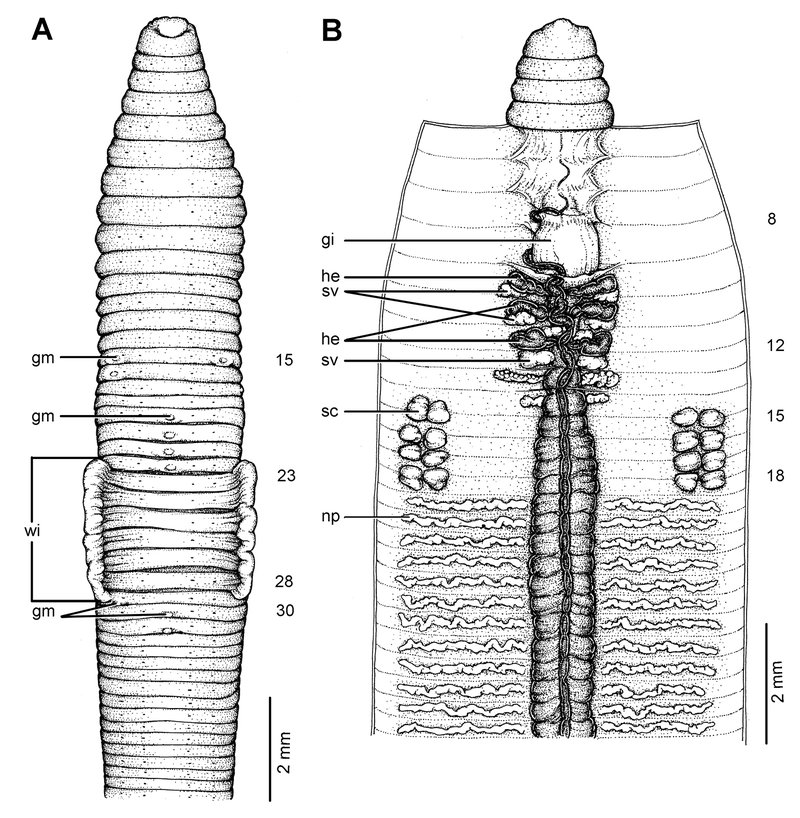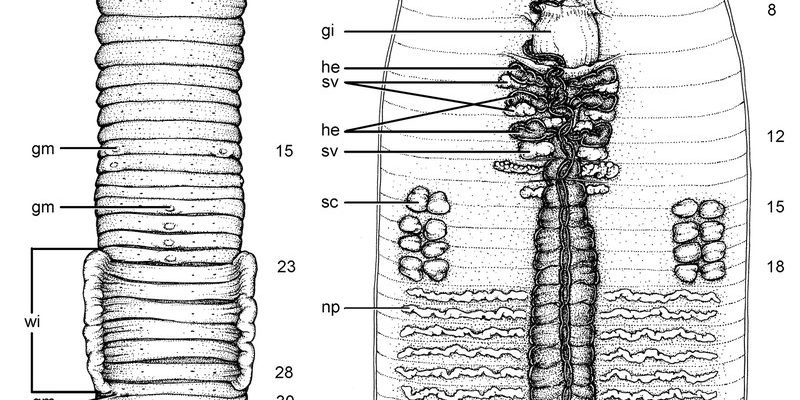
Identifying a freshwater oligochaete might sound daunting, but it’s not as tricky as it seems. Think of it as a treasure hunt. With the right tools and a bit of patience, you can spot these worms in their natural habitat. So, grab your notepad and let’s dive into the world of oligochaetes!
What Are Freshwater Oligochaetes?
To get started, it’s essential to understand what freshwater oligochaetes are. These worms belong to the class Oligochaeta, which means “few bristles.” They are usually characterized by their long, slender bodies, which can be anywhere from a few millimeters to several centimeters long. Their bodies are divided into segments, often making them look a bit like tiny earthworms.
You might be wondering what makes oligochaetes special. Well, they play a crucial role in freshwater ecosystems! They help decompose organic material and cycle nutrients. By doing this, they contribute to the health of the water and the surrounding environment. So, not only are they interesting to spot, but they also carry out vital functions in nature.
Where to Find Freshwater Oligochaetes
Now that we know what these little guys are, let’s talk about where to find them. Freshwater oligochaetes thrive in diverse habitats, so you have plenty of options. Look for them in:
- Ponds and lakes
- Slow-moving streams and rivers
- Marshy areas with soft, muddy bottoms
- Wetlands with rich vegetation
When you’re out exploring, keep an eye out for areas with decaying leaves or other organic matter. Oligochaetes love to hang out in these spaces since they feed on decomposing material. If you see muddy areas or sediment, there’s a good chance you’ll find oligochaetes squiggling beneath the surface.
Tools You’ll Need for Identification
You might be thinking, “How can I spot these worms?” Well, a few simple tools can help make your search easier and more effective. Here’s a quick rundown of what you’ll need:
- Magnifying glass: This will help you see the intricate details of the oligochaetes.
- Scoop or net: Use this to collect samples from the water or mud.
- Container: A clear container ensures you can observe the worms without harming them.
- Field guide: A local guide to freshwater invertebrates can help you identify what you find.
With these tools in hand, you’ll be better prepared for your oligochaete adventure. Remember, always be gentle when collecting any specimens. We want to keep our ecosystems healthy!
Key Characteristics of Freshwater Oligochaetes
When it comes to identifying freshwater oligochaetes, there are certain characteristics you’ll want to look out for. Here are a few key features to help you make a positive identification:
1. Segmented Body: Oligochaetes have distinct body segments, usually ranging from 20 to over 100. Each segment is typically a similar width, giving the worm a uniform appearance.
2. Color: They can vary in color from light brown to dark green or even reddish. Some may have a shiny appearance, while others may seem more matte.
3. Setae (Bristles): While oligochaetes have fewer bristles than other types of worms, you can still spot them. These tiny hair-like structures aid in movement and can be found on each segment.
4. Crawling Motion: Unlike some worms that may swim, oligochaetes move through the substrate by contracting and relaxing their muscles. Watch for any creeping or burrowing action.
These characteristics are your roadmap to successfully identifying oligochaetes. Pay careful attention, and take notes if you need!
Oligochaete Habitat Preferences
Understanding the habitat preferences of freshwater oligochaetes can enhance your chances of finding them. These worms tend to favor specific environments, which can vary based on their species. Here are some common habitat preferences:
– Soft Substrates: Oligochaetes prefer soft, muddy substrates over rocky ones. They burrow into the mud and can often be found just below the surface.
– Vegetation-Rich Areas: Areas abundant with decaying leaves, plant roots, and organic matter are ideal for oligochaetes. The presence of vegetation provides food and shelter.
– Low Flow Zones: Oligochaetes thrive in slower-moving waters, like backwaters or areas sheltered from strong currents.
When you’re exploring, search in these types of habitats. The more you understand their preferences, the easier it will be to spot them.
Observing Oligochaetes in Their Natural Habitat
Once you’ve located a potential oligochaete habitat, it’s time for some careful observation. Here’s how you can effectively watch these worms in their natural environment:
1. Collect Samples: Use your scoop or net to collect a small sample of sediment or water from the area. Keep it light so you don’t disturb the ecosystem too much.
2. Examine Carefully: Place your samples in your clear container and use your magnifying glass to inspect for oligochaetes. Watch how they move and behave.
3. Take Notes: Document your findings! Note the environment, any other creatures you observe, and the characteristics of the worms themselves.
Observing oligochaetes in their natural habitat can be both exciting and educational. You’ll not only learn about them but also develop a deeper appreciation for the ecosystems they inhabit.
Why Identifying Freshwater Oligochaetes Matters
You might be wondering, “What’s the big deal about identifying these worms?” Well, knowing how to identify freshwater oligochaetes holds several important implications:
– Ecosystem Health: Oligochaetes are great bioindicators. Their presence or absence can tell us a lot about the health of water habitats. If they’re thriving, it often means the environment is healthy.
– Biodiversity Awareness: By recognizing different species of oligochaetes, we contribute to our understanding of biodiversity in freshwater ecosystems. This knowledge helps scientists track changes in populations over time.
– Educational Opportunities: Engaging with oligochaetes can inspire curiosity and educate us about the wonders of nature. It’s a way to connect with the environment and appreciate its complexity.
So, the next time you’re out by the water, remember that oligochaetes are more than just squiggly worms—they’re important players in our ecosystems!
In conclusion, identifying freshwater oligochaetes in their natural habitat can be a fun and rewarding adventure. Equipped with the right tools and knowledge about their characteristics, habitats, and ecology, you’re ready to explore and appreciate these fascinating creatures. So why not step outside, take a closer look at your local waterways, and see what squirmy wonders you can discover? Happy worm hunting!

